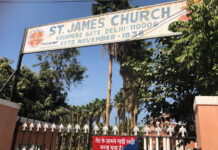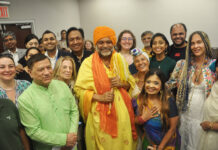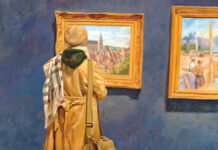First Indian American doctor Rajendra Desai became independent India’s first doctor to get the Fulbright Scholarship for further studies in the US in 1952
By a reporter
LOS ANGELES: As the gunman behind the massacre at the Sikh Temple of Wisconsin on Sunday has been identified as a white supremacist, the incident has triggered fears that such attacks – in the aftermath of 9/11 – on Muslims and Sikhs symbolize the rise of racism in the US.
But Dr Rajendra Desai, 88, who was among the first few Indians to come in the US in the early 1950s, doesn’t think so, though he is horrified by the tragedy.
The octogenarian Desai, who in 1952 was independent India’s first doctor to get the Fulbright Scholarship for further studies in the US, says besides isolated cases perpetrated by individuals American society collectively has become very tolerant.
And he is speaks from experience.
“Today, America is totally different from what I saw when I came here. In 1953, when I was sent for training from Boston to the Institute of Nuclear Medicine at Oak Ridge in the racially tense state of Tennessee, white Americans thought I was a black person because they had never seen an Indian,’’ Desai recalls.
So, the young Indian doctor was also given the racial treatment that was reserved for the black people at that time.
As Desai recalls, “I was given the treatment that blacks received in those days. Whites and blacks sat separately in buses, ate separately in restaurants and never mingled. I remember a bus driver once telling me: `You nigger sit at the back.’ I got the same treatment when I would go to restaurants. I used to sit at the back where blacks sat. I experienced first-hand what it meant to be a black person in America in those days.
“It was a horrible feeling. Anyway, I was sent there to learn nuclear medicine, so I kept my mouth shut. Oak Ridge was a town of 40,000 people in 1953. It was the place where Americans had developed the bombs that were dropped on Japan in the Second World War. A classified town, it was off-limits to most Americans.’’
Today, America is a totally different country, he says, adding that institutionalized racism is a thing of the past.
“When I landed in America, there were just 100-odd Indians in this country. Today, we number almost three million. Back then, Indians were a rare sight in the US,’’ says the old doctor who has lived in southern California for over five decades.
“I never encountered any racism after those initial experiences. America is a racially tolerant society today,’’ he says.
(This article first appeared on August 9, 2012)








